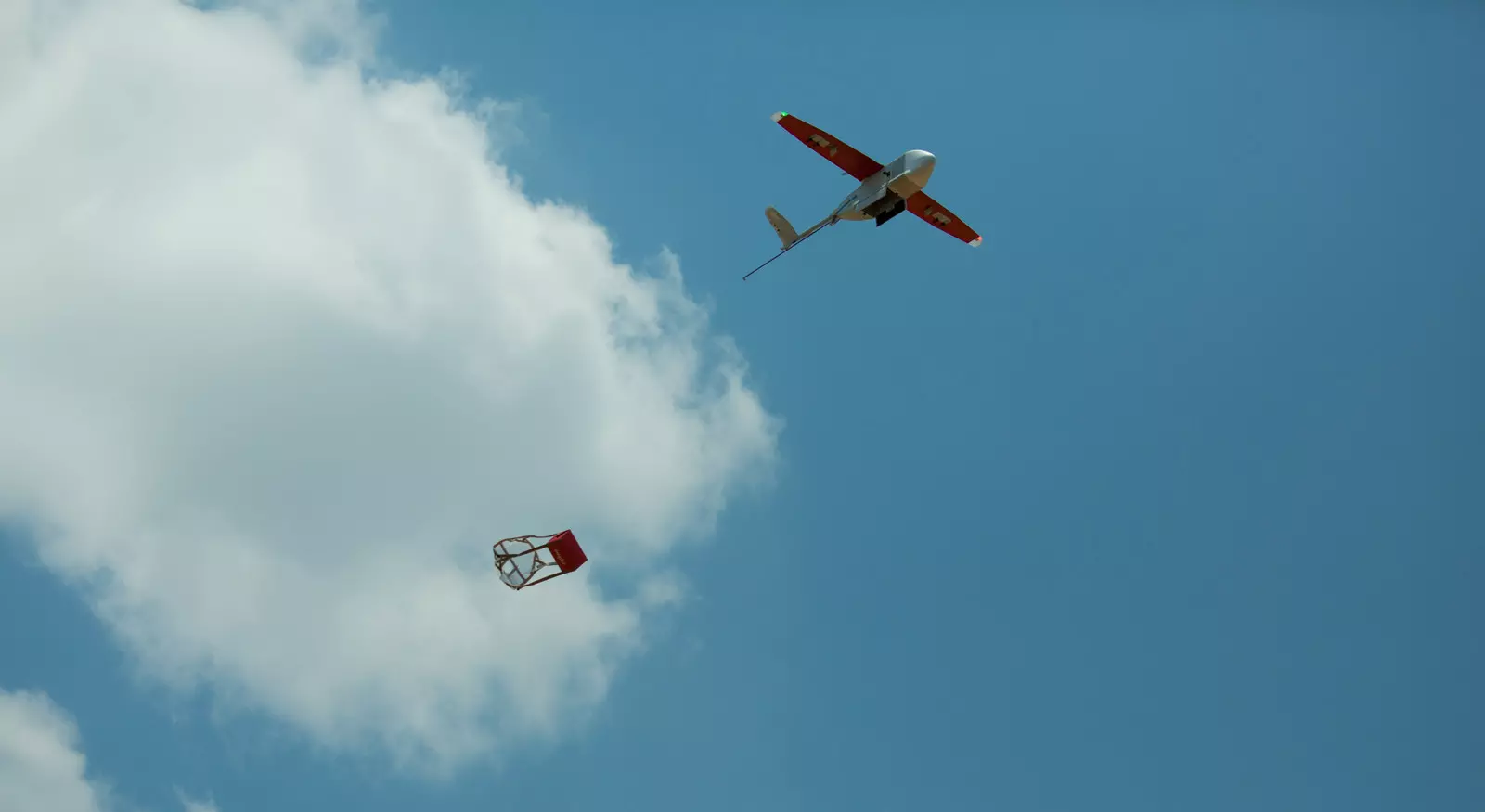As global healthcare systems grapple with overcapacity, workforce shortages, and escalating environmental pressures, a solution once reserved for science fiction is rapidly becoming a practical reality: the delivery of medical supplies via drones (unmanned aerial vehicles – UAVs). Across the United Kingdom and the Netherlands, a wave of pilot programs is demonstrating that this technology is not only feasible but holds immense promise in enhancing treatment efficacy, reducing wait times, and minimizing environmental impact.

UAVs: A Faster, Greener Solution for Medical Logistics
UAVs have already been deployed to transport pharmaceuticals and medical materials in remote regions such as Rwanda, the United States, Australia, and India. More recently, trials conducted in the UK indicate that UAV applications can extend beyond remote or underserved regions and be seamlessly integrated into sophisticated healthcare networks such as the National Health Service (NHS).
Professor Claire Anderson, President of the Royal Pharmaceutical Society, notes:
“UAVs offer timely access to medicines for hard-to-reach areas. The COVID-19 pandemic underscored the urgency of contactless delivery mechanisms.”
The benefits of UAVs in medical logistics are indisputable: reduced delivery times, cost and emission savings, improved home care potential, and the reallocation of healthcare personnel to frontline care services.
However, current UAV technology is limited in payload capacity (typically 2–4 kilograms), flight range, and battery endurance. Furthermore, some medical goods require stringent storage conditions, necessitating specialized cargo compartments and strict compliance with pharmaceutical safety regulations.
Five Leading Medical Drone Initiatives: From Pilot to Practice
1. Open Skies Cornwall – Overcoming Geographic and Climatic Barriers
With unpredictable weather and challenging terrain, Cornwall – particularly the Isles of Scilly – often suffers from delays in transporting medical samples and medications. The Open Skies Cornwall project emerged as a medical lifeline, utilizing UAVs to ensure timely specimen delivery, reduce diagnostic errors, and eliminate the need for re-testing.
Jo Walsh, Lead for Pathology Optimisation at the Royal Cornwall Hospital, asserts:
“We don’t want this to remain just a pilot – the objective is to embed UAVs as a permanent fixture in our medical logistics framework.”
The project also explores “ship-to-shore” applications, enabling drone-based delivery of life-saving equipment such as automated defibrillators and facilitating remote medical support for residents and tourists in coastal areas.
2. Project CAELUS – The First National Medical Drone Network in Scotland
Led by AGS Airports and supported by 16 partners including NHS Scotland, Project CAELUS aims to construct the UK’s first nationwide medical drone logistics network. The initiative envisions a comprehensive UAV system capable of transporting lab samples, medications, and even organs, connecting hospitals, diagnostic centers, and clinics across Scotland, particularly in rural and hard-to-access regions.
Dr. Jamie Hogg, Clinical Lead for North Scotland, states:
“UAVs can deliver critical medical supplies to rural patients faster and enable treatment closer to home – something that was previously unattainable.”
3. NHS Blood and Transplant – Transporting Life via the Skies
In a groundbreaking study, UAVs successfully transported 10 units of blood across a 68-kilometer route, benchmarked against conventional ground transport. The findings revealed no degradation in biological quality, paving the way for drone-based transport of blood products, lab samples, and potentially platelets in the near future.
Mike Wiltshire, Laboratory Manager at NHS Blood and Transplant (NHSBT), comments:
“With UAVs, patients could receive transfusions or test results the same day – significantly reducing treatment delays and enhancing health outcomes.”
4. Welsh Health Drone Innovation – Building an Aerial Healthcare Bridge
This initiative seeks to bridge the geographic and infrastructural divide between North and South Wales, focusing on the delivery of blood and medical supplies. In addition to optimizing routine logistics, the project aims to develop rapid-response solutions for emergencies in remote and underserved areas.
Partners – including the Welsh Blood Service, Cardiff University, and the Welsh Government – are collaboratively developing a sustainable and scalable drone-based logistics model tailored for long-term deployment.
5. Beyond the Horizon – Extending Reach to Remote Islands
Another pilot in the UK investigates the feasibility of UAV transport of medical goods to isolated islands, especially during rough sea conditions when traditional logistics are disrupted. The collaboration among medical institutions, civil aviation authorities, and tech firms is key to unlocking the full potential of this model on a national scale.
A Future Taking Flight Today
While challenges remain – including payload limitations, battery technology, and stringent regulatory compliance – the above initiatives highlight the transformative potential of UAVs in modern healthcare.
Professor Anderson concludes:
“UAVs are not just a technological innovation. They are a humanitarian solution – bringing hope to patients awaiting medication, blood, or lab results, wherever they may be.”
As healthcare enters the digital age, the sky may well become a new lifeline – a corridor of care where drones carry not only supplies, but hope, trust, and the promise of survival.
